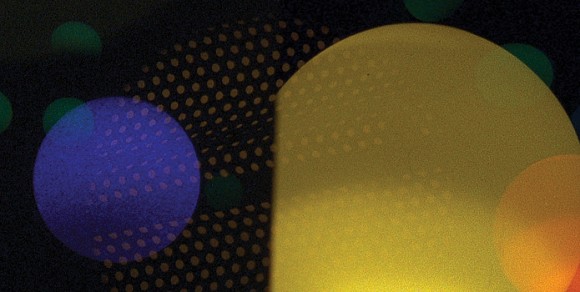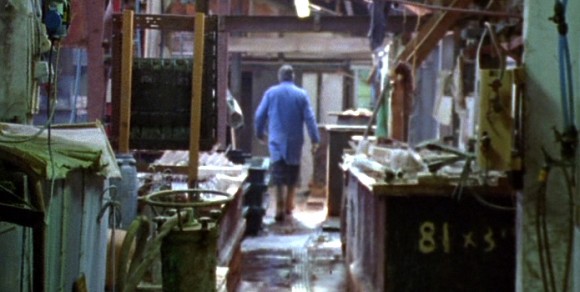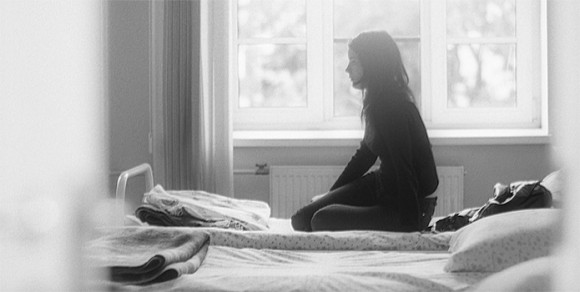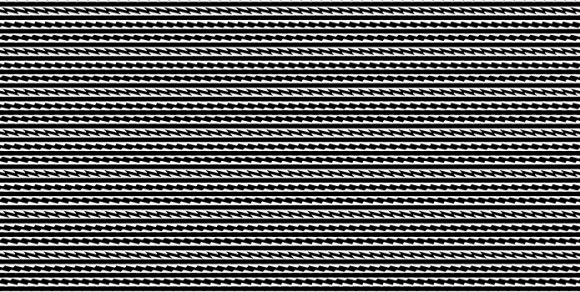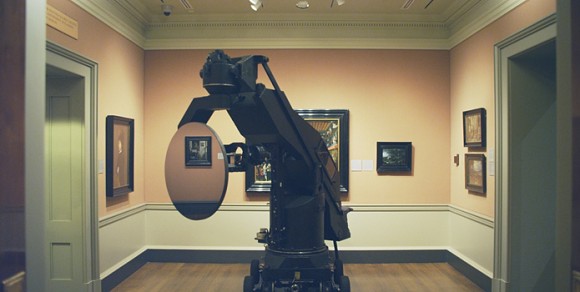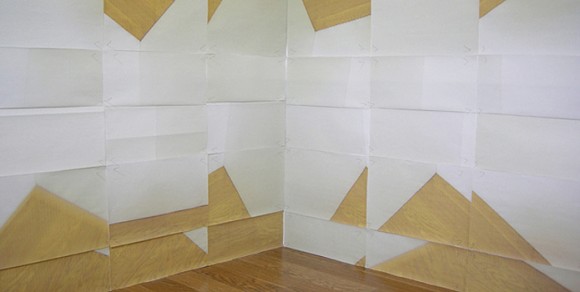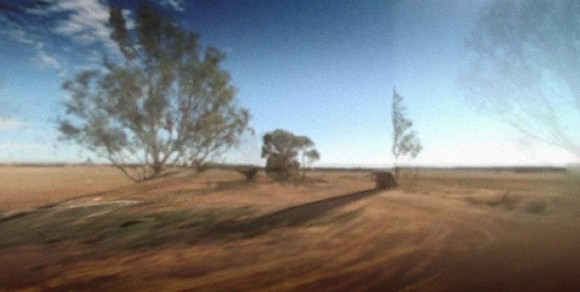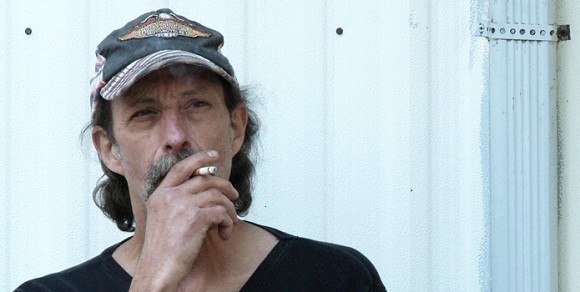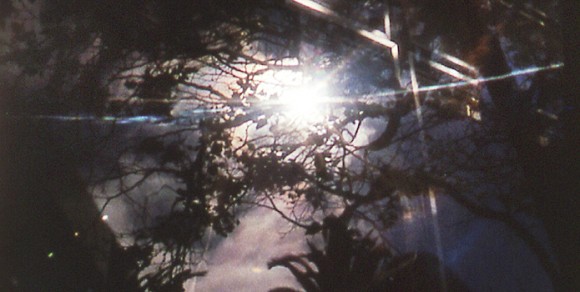TIFF Day 5: Wavelengths
By Bart Testa
The Toronto International Film Festival’s experimental film series Wavelengths was begun by Cinematheque Ontario programmer Susan Oxtoby a decade ago as an outgrowth of her popular year-round Cinematheque series The Free Screen—and not of anything happening at TIFF itself, which has consistently displayed little interest in avant-garde films. Wavelengths continued with Oxtoby’s successor, Andréa Picard, who is now also about to depart the TIFF organization. I doubt that Wavelengths will long survive her leaving. The offspring of the Cinematheque’s more demanding programming spirit, and a separatist sidebar at the Festival—located safely away from the red carpets at the Art Gallery of Ontario’s 200-seat screening room, and attended by its own recurring capacity audience—Wavelengths is unlikely to find another champion in the new, glamourama Lightbox era now absorbing the whole TIFF operation.
While not the most thorough experimental window in the Toronto neighborhood (the Images Festival and Media City compete for that role), Wavelengths is unique in being curated by a single programmer. Picard stamps each suite of films with a thematic title, and her on-stage introductions try, lightly, to draw links across each set of films. The disparate offerings this year made for an uneven flow across the three mixed programs, while the fourth consisted of James Benning’s newest feature, Twenty Cigarettes, and the fifth of a film by Nathaniel Dorksy accompanied by a “performance” piece. The first program, Analogue Arcadia, derives its title from the films’ shared themes (times and places of a certain lost perfection) and the ever-sharper disparity between analogue media and video/digital. The thematic anchor was Joshua Bonnetta’s American Colour, though it was shown last. Bonnetta shuffles a suite of images he shot with a compact series of colour fields. These latter comprise an extraction of the primary Kodachrome palette. The Kodak stock was discontinued this year, after decades as the preferred format for home movies and avant-garde art alike, and when Bonnetta intercuts the colour fields, he intends a bright and quick lament to a loved medium. For the short single takes, he chooses American landscape subjects—we get it, Kodak’s demotic film stock echoing off fields and barns and highways are a technical signature of democracy. The soft melancholy of the project and its formality are obvious and well intended, but do nothing to explain why grey-green-brown dreariness dominates Bonnetta’s American imagery. Why is Kodachrome exclusively linked here to scrubby fields and forlorn barns (the stock-in-trade of Depression-era photography) when it was used just as often to record the candy-hued American arcadia of the 1950s and 1960s? Bonnetta’s homage tips too far into mourning.
Of the various identifiable subgenres in experimental film, one of the most obvious, and unnecessary, is the travelogue, which inevitably feels like filler in any program. This is unfortunate, since the prototypes—e.g., Oskar Fischinger’s Walking From Hamburg to Berlin (1927), a 350-mile stroll he condensed into a 20-minute film—are classics. Nick Collins’ Loutra/Baths, a record of a trip to some Roman ruins, is shapeless and desultory higher tourism, while Ute Aurand’s Young Pines similarly achieves only tony sketchbook clichés of Japan: temple stones (and bells), wood, and lots of flowers. Apichatpong Weerasethakul’s Empire is a one-minute trailer: some undersea shots, a few shots of weird caves, and it’s gone.
With Sack Barrow, Ben Rivers had an interesting idea: revisit a recently closed London plating factory and treat its rusting, obsolete machines and murky chemical baths like a found-object “cabinet of wonders” by shooting it like the Quay Brothers might have. Too bad that, while he gets the framing right, Rivers allows the film to linger too long and dissolve into sad sentiment rather than remaining mysteriously odd. A more significant disappointment was Tacita Dean’s Edwin Parker, her portrait of recently deceased American abstract artist Cy Twombly (the film is titled after his birth name). Dean is an interesting artist in her own right, but here, despite some nice tricky early framing, she never finds a tactic for this eventless movie and the result is just too slight to hold interest for its 29 minutes. The closest Twombly comes to saying anything actually audible is when he orders a turkey sandwich at his hometown Lexington, Virginia diner. One sadly suspects that, at this very late stage, the ancient lion’s life is winding down to strings of such senior moments. The film might have been better had Dean gotten to Twombly while he was living in Italy (where he spent most of his career) instead of his hometown, and had she shot him actually painting. Sophie Michael’s 99 Clerkenwell Road is a revisiting of Fischinger’s abstract colour animations of the 1940s, with vividly coloured disc-like forms dancing across and into the screen. Although this sort of thing is a well-worn mode in avant-garde film—and two of its great artists, Robert Breer and Jordan Belson (both with roots in the 1950s), have just died—Michael pulls it off deftly.
The second mixed program, Serial Rhythms, was really mixed. It started with Found Cuban Mounts, Adriana Arroyo’s swiftly cut montage of partly crumbled Cuban revolutionary monuments, a nicely crafted piece that manages to stay just this side of out-and-out sarcasm. Russian artist Alina Rundnitskaya’s I Will Forget This Day is a formalized documentary portrait of Russian women awaiting—and, I gathered, receiving—abortions at a glaring white clinic. Rudinsky cuts several extended passages on a metrical pattern, creating a serial repetition which has the paradoxical effect of individuating the women as they enter and leave the operating theatre (the film elides any view of the procedure).
At the centre of Serial Rhythms Picard placed a new film by John Price, Sea Series #10, and coupled it to an old one, Joyce Wieland’s 1967 Sailboat. Price’s project is overall a technical one: he hand-processes 35mm widescreen material to produce texture and colour effects. But in this case, Price draws out a subtle implication of Wieland’s film, namely catastrophe. Wieland made Sailboat against the background of her series of disaster paintings and small reliefs involving boats and planes she made in the mid-1960s. Though Sailboat seems just a structural-film loop of a sailboat passing across the frame, Wieland uses atmospheric effects to almost obliterate the vessel. Price’s film amplifies this effect (he multiples the boats, roughens the weather), and then in its second part shows holidayers cavorting along a beach that recedes into the frame until the beach meets the hulk of a power plant. (Price here processes his footage to resemble ancient orthochromatic stock, drawing on another structural film classic, David Rimmer’s 1971 Seashore, which recycles early-film footage of a beach party.) That Price manages to find wry implications of apocalypse in what seems a purely formal-technical exercise is the measure of his achievement.
Rose Lowder is a firmly established French experimental filmmaker, though I find her long-term serial project—pixillating shots of flowers such that they agitate frame-by-frame in short or long bursts—has long ago yielded what returns were on offer a long time before Bouquets 11-20, her sub-series devoted to European ecological preserves. In contrast, T. Marie’s Optra Field cycle continues to engage and almost enchant. Marie’s explanation of her project is as dry as plaster, though she made a fascinating decision to treat the video pixel as her unit of composition. She generates a uniform field—one of her variations on a grid—of very fine units of tiny linear shapes. As these change, the field undergoes uneven and hardly noticeable transformations until it resolves into a fresh equilibrium. It happens slowly, but each piece of the series is brief, well fitted to a viewer’s close attention. The delicious surprises of her films come when we snap back from following the changes in the imagery to a perception of the transformed field; it is impossible to guess where the mobile grid is headed. The latest addition, VII-IX, basically turns a black-and-white diagonal field upright, and the molecular pixels form up into solid black lines. Marie’s films are lineal descendents of Op Art but reconfigured for the era of digital and computer video and, unlike Op Art, they do not so much seek to astonish the eye by imposing conundrums, but succeed in engaging it with attentive fascination.
Chris Kennedy and Mark Lewis both redeployed artworks in their films. Kennedy’s 349 (for Sol LeWitt) uses the instructions of LeWitt’s drawing room installation 349 to derive a brief, one-minute set of variations in colour and geometrical shape. The film is a chromatic burst, and it is also a blast. In Black Mirror at the National Gallery, Lewis deploys a large robot-crane to pass a rounded mirror through several small galleries of 18th-century genre paintings in London’s National Gallery. The mirror effects are curious enough, but are really dwarfed by the oddness of the huge black servomechanism—a sort of Transformer Jeeves. I’m unsure if this was intentional.
The film that gave the set its title, Eriko Sonoda’s Space is the Place, rhymes with Kennedy’s 349, but Sonoda has made her own room piece, or rather corner piece. A set of wood-textured triangles drawn on paper and taped low on a wall near an actual wood floor is rearranged in each frame, creating the effect of an impossible, multiplying reflection. As well as impressing with the precision and labour that went into the making of the film, there is a paradoxical sense of a real space that holds the coloured abstract dance in place. Neil Beloufa’s Untitled is an oddball variation on a police procedural, without police. A group of people visit a house—or revisit it, since they might be its owners—after it had been occupied for a time by squatters, or used for hiding terrorists. We are not sure since the testimonies, given with the characters’ backs turned to us, are contradictory, and never substantiated. The house itself seems to be a luxurious modern villa with a pool, but it is really a movie set comprised of ink jet panels in place of window views, flimsy paper doors and cardboard furniture. The film is uneasy and weird, banal and unresolved all at once.
Eventually someone had to do this, and maybe several people already have: Blake Williams composed his brilliantly simple and handsomely sustained Coorow-Latham Road using Google Street View. The film’s subject is a 46-kilometre stretch of road in arid Australia, with a flat gold-brown landscape stretching out from a thin line of trees beside the straight-arrow highway. Williams begins the film looking ahead, gradually pans right over 20 minutes and then to the rear, his fictional speed a constant 85 mph. Each frame is static and when linked up a series produces “ghosts” as it slides into the next, creating a quick-and-delayed effect while the blue, lightly clouded sky remains more or less constant; spatially, the overlapping effect and the emphatic planarity of the Google image oddly recalls an old-fashioned museum diorama.
James Benning and Nathaniel Dorsky were the two elder statesmen represented at this year’s Wavelengths, with Twenty Cigarettes and The Return respectively. Though known and respected for decades, Benning has in recent years achieved a higher profile with his two rigorous feature-length landscape films, 2008’s RR and 2009’s Ruhr. (RR was his last film made in 16mm, Ruhr his first in HDcam, a shift that drew a lot of attention.) Benning’s new film is a suite of twenty filmed portraits, ten men and ten women: each subject is placed in a close-up facing a fixed camera against a shallow background, exterior or interior, and lights and smokes a whole Camel filtered cigarette. (Benning explained that he knows all these people, and that he abandoned the camera once it was rolling.) The duration of the single shots that make up each portrait is determined by the length it takes to light and smoke the cigarette. There is variation on the timing: obvious non-smokers puff more quickly, for example. The film has ambient sounds (as always Benning mixes his soundtrack strategically) but no dialogue, aside from one guy who talks to his offscreen dog.
There is a long tradition of experimental portrait filmmaking (e.g., Larry Jordan, Hollis Frampton, Stan Brakhage, Michael Snow, Warren Sonbert, and most famously Andy Warhol) and the question arises of what the effect—and then, I suppose, the purpose—of filmed portraits might be. On one side, there is the film theory mythology about the human face in film, associated with photogénie and promulgated chiefly by Béla Balázs and Jean Epstein in the 1920s, that suggests the close-up frame produces some kind of revelation of personality or a delicately registered inspection of physiognomy that is film’s special privilege. In his discussion of Twenty Cigarettes, Benning expresses a version of this: that at some moments his subjects emerge from their discomfort in the face of the camera, or from their posing for it, to be themselves. I don’t buy it, and never really have in the case of any filmmaker. The revelations the camera supposedly affords invariably turn out to be subtle (or blatant) constructs of the filmmakers and/or actors’ artistry; the untrained film portrait subject closes in and hangs in there until the shot is over.
An alternative perspective is to see serial portraiture of this kind as a gathering of types into a catalogue, which is ultimately more fitting to Benning, who seems with Twenty Cigarettes to have created a catalogue of his portrait preferences: in the case of the men, oddball-to-decadent variations on the old, weird American loner (from filmmaker Thom Andersen to the Wilford Brimley-lookalike dog-talker); for the women, a kind of descendant of frontier-farmer America, with good bones, steady gazes, and little visible sophistication. (About halfway through the film, photographer-filmmaker Sharon Lockhart appears in a loose flannel shirt under a big, soft-focus sky—the big-city, globe-trotting Los Angeles artist posed as flatlands Everywoman. Lockhart looks the part, almost too well.) To this core group Benning adds a black teenager, a black woman, two Asians and two Hispanics, but they seem exactly that: conscious additions. Benning’s Americana figures are the human correspondents to the unpeopled landscapes that predominate in his films, his national index of authenticity. Contra Benning’s claims, Twenty Cigarettes is arresting rather as a kind of contemporary American analogue to the work of August Sander, the photographer who made portraits of ordinary Germans in the 1920s: it’s a gallery of types and typage, not a revelation of personality.
Dorsky, who offered a fond goodbye to Picard at the conclusion of his program that was answered by a standing ovation, has been a mainstay of Wavelengths for years, perhaps because he is so exemplary of what we understand an avant-garde filmmaker to be: serious, stubborn, aesthetically self-aware, a man with a project it is inconceivable he would ever abandon. In this respect, he has assumed the mantle of the late Stan Brakhage, absent the wilderness-prophet persona; Dorsky’s is more the professor-as-stand-up until he digs into a discussion, which he rarely does with audiences. As yet, no one has written a detailed appreciation of Dorksy or anything on his development, and it hard to imagine how one would go about it.* (His own manifesto, Devotional Cinema, seems to cover pretty much whatever there is to say about his project.) The films, including The Return, are concisely structured along lyrical lines: a series of rather long takes projected slower (at 18fps) than the speed at which they were shot. Dorksy unveils ordinary things to introduce quiet conundrums in complete silence—about space, objects, light—and then he begins to unveil places and things in their manifestation to the eye. The tone tends to be even, with only slight modulation. Dorsky is not inclined to elation or sadness, but creates a contemplative cinema, almost impossible to paraphrase. He manifests an ideal of experimental cinema that seems uncannily whole, despite an assured run of films consisting of beautifully partial views.
* CORRECTION: Dorsky informs me that P. Adams Sitney authored an article on his work in the November 2007 ArtForum.
Bart Testa
